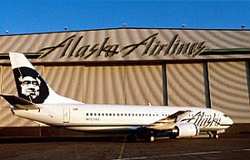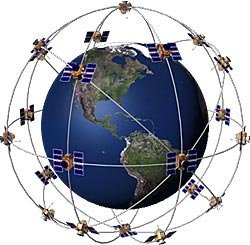Wed, Jan 29, 2003
Passenger Flight to San Francisco Used RNP Satellite-Based
Precision Approach
 Alaska
Airlines has operated the first passenger flight to make a
precision approach at San Francisco International Airport using a
Required Navigational Performance satellite-based navigation
system.
Alaska
Airlines has operated the first passenger flight to make a
precision approach at San Francisco International Airport using a
Required Navigational Performance satellite-based navigation
system.
The flight, Alaska Flight 592, departed Seattle on Thursday,
January 23, at 5:55 p.m. and arrived on schedule in San Francisco
at 8:04 p.m.
Unlike a regular approach using ground-based navigational aids,
the flight relied on a precision guidance approach using RNP, which
draws data from the network of satellites known as the Global
Positioning System and an onboard navigation database to guide the
aircraft along a precisely defined, computer-plotted flight
path.
"This represents a significant step toward the use of an RNP
guidance approach in San Francisco to help improve traffic flow
when operations ordinarily would be restricted to just one runway,"
said Kevin Finan, Alaska's vice president of flight operations. "It
also represents a truly cooperative effort between the FAA, the
airport, the airlines, the Air Line Pilots Association, and the
National Air Traffic Controllers Association, all of whom have
worked hard over many years to make this first step possible."
 This
marks a new milestone for enhanced use of RNP on commercial
passenger flights in the Lower 48. Alaska pioneered the use of RNP
in 1996 in Juneau, Alaska, where weather can limit access to the
airport located at one end of a narrow mountain channel. Since
then, the airline has expanded its use to six other airports in
rural Alaska, where similar weather conditions and geography are
present.
This
marks a new milestone for enhanced use of RNP on commercial
passenger flights in the Lower 48. Alaska pioneered the use of RNP
in 1996 in Juneau, Alaska, where weather can limit access to the
airport located at one end of a narrow mountain channel. Since
then, the airline has expanded its use to six other airports in
rural Alaska, where similar weather conditions and geography are
present.
In San Francisco, the RNP approach is being developed to allow
RNP-equipped aircraft to land on the airport's second runway under
conditions that currently limit airport operations to just one
runway. The airport is also introducing an enhanced radar system to
provide a similar capability for simultaneous landings in certain
conditions for non-RNP-equipped aircraft.
More News
Aero Linx: JAARS Nearly 1.5 billion people, using more than 5,500 languages, do not have a full Bible in their first language. Many of these people live in the most remote parts of>[...]
'Airplane Bounced Twice On The Grass Runway, Resulting In The Nose Wheel Separating From The Airplane...' Analysis: The pilot reported, “upon touchdown, the plane jumped back>[...]
"Burt is best known to the public for his historic designs of SpaceShipOne, Voyager, and GlobalFlyer, but for EAA members and aviation aficionados, his unique concepts began more t>[...]
"Polaris Dawn, the first of the program’s three human spaceflight missions, is targeted to launch to orbit no earlier than summer 2024. During the five-day mission, the crew >[...]
There Are SO Many Ways To Get YOUR Aero-News! It’s been a while since we have reminded everyone about all the ways we offer your daily dose of aviation news on-the-go...so he>[...]
 ANN's Daily Aero-Linx (05.04.24)
ANN's Daily Aero-Linx (05.04.24) NTSB Final Report: Quest Aircraft Co Inc Kodiak 100
NTSB Final Report: Quest Aircraft Co Inc Kodiak 100 Aero-News: Quote of the Day (05.04.24)
Aero-News: Quote of the Day (05.04.24) Aero-News: Quote of the Day (05.05.24)
Aero-News: Quote of the Day (05.05.24) Read/Watch/Listen... ANN Does It All
Read/Watch/Listen... ANN Does It All




